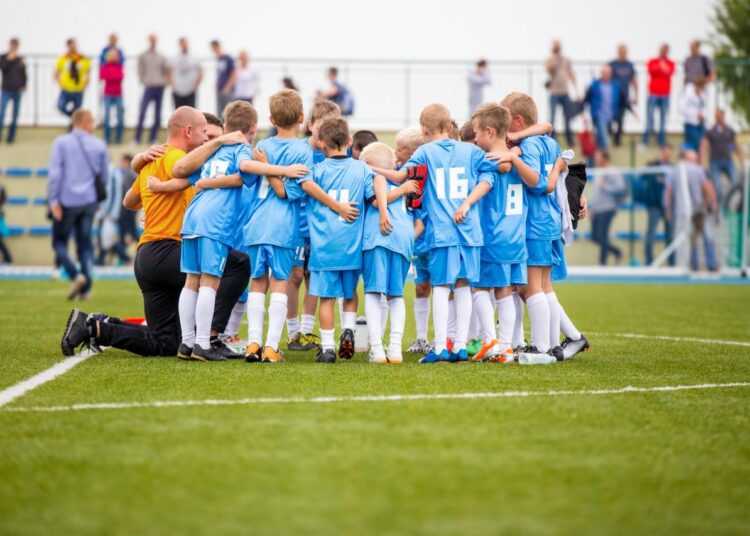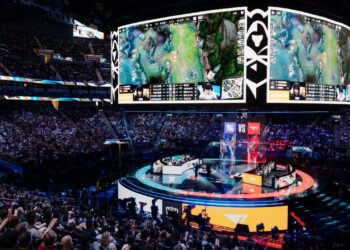In the dynamic tapestry of human endeavor, be it on the competitive fields of sport, within the demanding corridors of corporate innovation, or amidst the critical operations of emergency response, the immutable truth remains: team unity triumphs. Beyond individual brilliance or accumulated resources, it is the invisible yet potent force of cohesion, shared purpose, and unwavering mutual support that often dictates the ultimate outcome. A team that operates as a single, synchronized entity, where every member understands their role and contributes seamlessly to a collective goal, possesses an insurmountable advantage. This comprehensive article delves into the profound significance of team unity, exploring the psychological underpinnings that foster its development, the practical strategies for cultivating its strength, and the transformative impact it has on performance, resilience, and sustainable success across diverse domains. We’ll unveil why building a truly unified team isn’t just an aspiration, but the ultimate strategic imperative.
The Essence of Team Unity

Team unity transcends mere collaboration or cooperation; it is a profound state of interconnectedness where individual efforts are magnified exponentially by collective synergy. It’s the difference between a group of talented individuals and a truly formidable force.
A. Shared Vision and Purpose
The bedrock of unity is a common understanding and emotional buy-in to a singular, compelling objective.
- Clear Articulation of Goals: Every team member must not only know the ultimate goal but also understand how their individual contributions directly impact its achievement. This provides direction and meaning.
- Emotional Connection to the Vision: Beyond cognitive understanding, there must be an emotional resonance with the team’s mission. When individuals feel deeply invested in the “why,” their commitment transcends mere duty. This turns a task into a calling.
- Alignment of Individual and Team Goals: While individuals have personal aspirations, a unified team finds ways to align these with the broader team objectives. This avoids internal conflicts of interest and ensures everyone is pulling in the same direction.
- Collective Ownership: Fostering a sense that the team’s successes and failures are shared. No single person takes all the credit or all the blame, promoting a spirit of collective responsibility.
B. Trust
Trust is the adhesive that binds a team, allowing for vulnerability, open communication, and reliance on one another.
- Trust in Competence: Belief that each team member possesses the necessary skills and expertise to fulfill their role effectively. This ensures confidence in task delegation and execution.
- Trust in Character: Conviction that teammates will act with integrity, honesty, and in the best interest of the team, even when no one is watching. This eliminates suspicion and fosters psychological safety.
- Predictability and Reliability: Knowing that teammates will consistently follow through on their commitments and be dependable, reducing anxiety and increasing efficiency. This builds confidence in the system.
- Vulnerability-Based Trust: The willingness of team members to admit mistakes, acknowledge weaknesses, and ask for help without fear of judgment or reprisal. This is the deepest form of trust and allows for genuine growth.
C. Open and Honest Communication
Unity thrives on transparent, frequent, and respectful dialogue, even when discussing difficult subjects.
- Psychological Safety: Creating an environment where individuals feel safe to express ideas, concerns, and dissenting opinions without fear of humiliation or punishment. This fosters innovation and critical thinking.
- Active Listening: Beyond just hearing words, truly understanding and empathizing with the perspectives of others. This prevents misunderstandings and builds rapport.
- Constructive Conflict: The ability to engage in healthy, task-oriented debate and disagreement without resorting to personal attacks. This leads to better decisions and stronger solutions.
- Regular Feedback Loops: Implementing mechanisms for consistent, timely, and actionable feedback, both positive and constructive, between team members and leaders. This promotes continuous improvement and clear expectations.
Pillars of Team Unity
Cultivating team unity is an ongoing process that requires deliberate effort, thoughtful leadership, and consistent reinforcement.
A. Strong and Visionary Leadership
Leaders are the architects of unity, setting the tone and guiding the path.
- Leading by Example: Demonstrating the desired behaviors – commitment, integrity, open communication, and a focus on collective goals.
- Clear Communication of Vision: Continuously articulating and reinforcing the shared vision and purpose, reminding the team of “why” they do what they do.
- Empowerment and Delegation: Trusting team members with responsibility and authority, fostering a sense of ownership and autonomy.
- Conflict Resolution: Mediating disputes, addressing interpersonal issues swiftly and fairly, and ensuring that conflicts are resolved constructively rather than festering.
- Celebrating Successes: Acknowledging and celebrating team achievements, both big and small, to reinforce positive behaviors and build morale. This makes the shared journey more rewarding.
B. Defined Roles and Interdependence
Every member knows their part, and understands how their role interlocks with others.
- Clarity of Responsibilities: Ensuring each team member has a clear understanding of their specific duties and expectations, minimizing ambiguity.
- Recognition of Interdependence: Highlighting how each role is critical and how the success of one depends on the performance of others. This fosters a sense of collective reliance.
- Cross-Training and Knowledge Sharing: Encouraging team members to learn about each other’s roles, fostering empathy and providing backup in case of absence or challenge. This builds a more resilient team.
- Accountability: Holding each other accountable for fulfilling their responsibilities, not in a punitive way, but as a mutual commitment to team success.
C. Shared Experiences and Team Building
Creating opportunities for bonding and mutual understanding beyond formal work tasks.
- Off-Site Activities: Engaging in team-building exercises, recreational outings, or social events that allow members to connect on a personal level outside of work pressures.
- Shared Challenges: Tackling difficult projects or overcoming significant obstacles together, which can forge strong bonds through shared adversity.
- Celebrating Milestones: Acknowledging personal and professional milestones within the team (birthdays, work anniversaries, project completions).
- Informal Interactions: Creating spaces and opportunities for casual conversations and spontaneous interactions (e.g., break rooms, team lunches).
D. Fairness and Equity
Ensuring that all team members feel treated justly and valued equally.
- Transparent Decision-Making: Explaining the rationale behind key decisions, even if they are unpopular, to build trust and avoid perceptions of favoritism.
- Equitable Distribution of Workload: Ensuring that tasks are distributed fairly and that no one is consistently overburdened or underutilized.
- Recognition and Reward: Acknowledging and rewarding contributions based on merit and effort, ensuring that successes are celebrated equitably.
- Inclusive Environment: Actively promoting diversity and inclusion, ensuring that all voices are heard, valued, and respected regardless of background or perspective. This creates a sense of belonging for everyone.
The Unmistakable Triumphs of Unified Teams

The benefits of strong team unity are profound and far-reaching, directly impacting performance and overall success.
A. Enhanced Performance and Efficiency
United teams consistently outperform fragmented ones.
- Streamlined Operations: With clear roles and mutual trust, tasks flow more smoothly, reducing friction and redundancy.
- Faster Decision-Making: Open communication and shared understanding allow for quicker, more effective decisions, especially under pressure.
- Increased Productivity: Motivated and cohesive teams are more engaged and willing to go the extra mile, leading to higher output and quality of work.
- Innovation and Creativity: A psychologically safe environment encourages individuals to share new ideas, experiment, and take calculated risks, fostering a culture of innovation.
B. Greater Resilience and Adaptability
Unified teams are better equipped to navigate challenges and bounce back from setbacks.
- Collective Problem-Solving: When faced with obstacles, unified teams pool their resources and diverse perspectives to find creative solutions.
- Shared Burden: Difficulties are shared, reducing the individual pressure on any one member and preventing burnout. Support systems within the team are robust.
- Faster Recovery from Failure: Instead of descending into blame, unified teams quickly analyze setbacks, learn from them, and regroup for the next challenge.
- Agility in Change: A cohesive team can adapt more quickly to changing circumstances, market shifts, or new competitive threats, as trust and communication are already established.
C. Improved Morale and Well-being
Unity fosters a positive and supportive environment, benefiting individual team members.
- Higher Job Satisfaction: Individuals feel more valued, connected, and supported, leading to greater enjoyment in their work.
- Reduced Stress and Burnout: The shared responsibility and mutual support act as a buffer against stress, promoting a healthier work-life balance.
- Stronger Sense of Belonging: Humans are social creatures, and a strong team provides a vital sense of community and purpose.
- Lower Turnover Rates: People are less likely to leave an environment where they feel appreciated, connected, and part of something meaningful.
D. Enhanced Reputation and Attractiveness
Unified teams often become magnets for talent and positive recognition.
- Attracting Top Talent: A reputation for strong teamwork and a positive culture makes it easier to recruit high-performing individuals who seek collaborative environments.
- Stronger Brand Image: External stakeholders (customers, partners, investors) are more likely to trust and engage with teams that demonstrate cohesion and effectiveness.
- Competitive Advantage: The intangible asset of unity becomes a formidable competitive advantage that is difficult for rivals to replicate.
Real-World Examples
Countless examples across history demonstrate the undeniable power of team unity.
- Golden State Warriors (NBA): Beyond individual superstars, their success was built on an unselfish, pass-heavy offensive system and a strong locker room culture emphasizing joy and collective effort. Players willingly sacrificed individual stats for team success.
- Iceland National Football Team (Euro 2016): A small nation defying expectations through incredible team spirit, disciplined tactics, and an unbreakable bond with their passionate fans (“Viking clap”). Their success was more about collective will than individual brilliance.
- All Blacks (Rugby): Renowned not just for their skill but their deep-seated culture of humility, continuous improvement, and the concept of “better people make better All Blacks,” fostering an enduring unity.
Challenges to Unity and How to Overcome Them
Unity is not automatic and can be fragile. Understanding potential threats is crucial for maintaining it.
A. Lack of Clear Communication
Failure to communicate transparently, leading to misunderstandings, assumptions, and resentment.
- Solution: Implement regular, structured communication channels (e.g., daily stand-ups, weekly meetings, shared digital platforms) and emphasize active listening.
B. Individual Ego and Self-Interest
When personal ambition overshadows collective goals, unity erodes.
- Solution: Reinforce shared vision, tie individual incentives to team outcomes, provide clear roles, and address ego-driven behavior through coaching or direct intervention.
C. Unresolved Conflict
Ignoring or mishandling interpersonal conflicts, allowing them to fester and poison team dynamics.
- Solution: Implement clear conflict resolution processes, encourage direct but respectful dialogue, and leaders should mediate effectively when necessary.
D. Lack of Trust
Past betrayals, unreliability, or perceived unfairness can shatter trust.
- Solution: Rebuild trust through consistent, trustworthy behavior, transparency, and honoring commitments. Leaders must model this behavior.
E. Change and Uncertainty
Periods of significant change can disrupt established team dynamics and create anxiety.
- Solution: Over-communicate during change, involve the team in the change process where possible, and emphasize the stability of the team’s core values.
F. Geographical Dispersion (Remote Teams)
When team members are not physically together, building unity requires extra effort.
- Solution: Utilize virtual communication tools effectively, schedule regular video calls to foster connection, create virtual social events, and ensure equitable access to information.
The Future of Team Unity
As work environments evolve, the principles of team unity remain timeless, but their application adapts.
A. Hybrid and Remote Teams
Building unity in distributed teams requires conscious effort in virtual engagement, asynchronous communication, and fostering psychological safety across digital divides. Technology like virtual reality (VR) could offer more immersive team-building experiences.
B. Agile Methodologies
The rise of agile frameworks emphasizes small, self-organizing teams with high degrees of autonomy and rapid iteration, inherently relying on strong unity and continuous feedback.
C. AI and Automation’s Role
While AI might handle repetitive tasks, the human element of complex problem-solving, creativity, and emotional intelligence in teams will become even more valuable, making unity of purpose and collaboration paramount.
D. Focus on Well-being and Inclusion
As organizations increasingly prioritize employee well-being and diversity, the cultivation of an inclusive environment where every team member feels valued and psychologically safe will be central to fostering deep unity.
Conclusion
In every arena of human endeavor, from championship games to groundbreaking scientific discoveries, the triumph of team unity stands as an undeniable force. It is the alchemy that transforms disparate talents into an unstoppable synergy, propelling individuals and organizations beyond their perceived limits. By consciously cultivating a shared vision, building robust trust, fostering open communication, and providing visionary leadership, teams can unlock unparalleled levels of performance, resilience, and collective well-being. In a world increasingly defined by complexity and interdependence, the ability to forge a truly unified team is not merely a desirable trait; it is the ultimate strategic advantage, ensuring that when challenges arise, united, we truly do stand strong, and united, we ultimately triumph.










